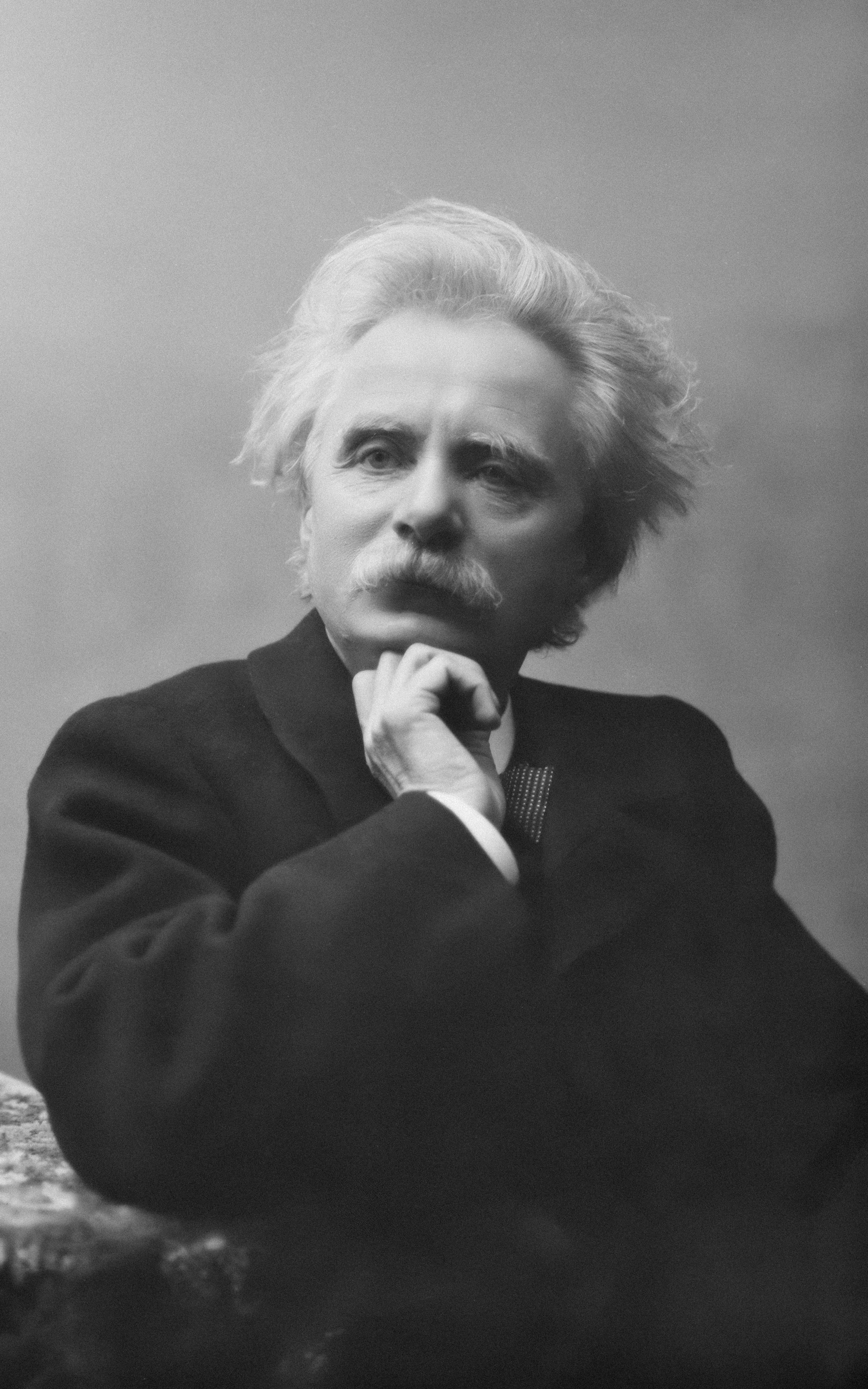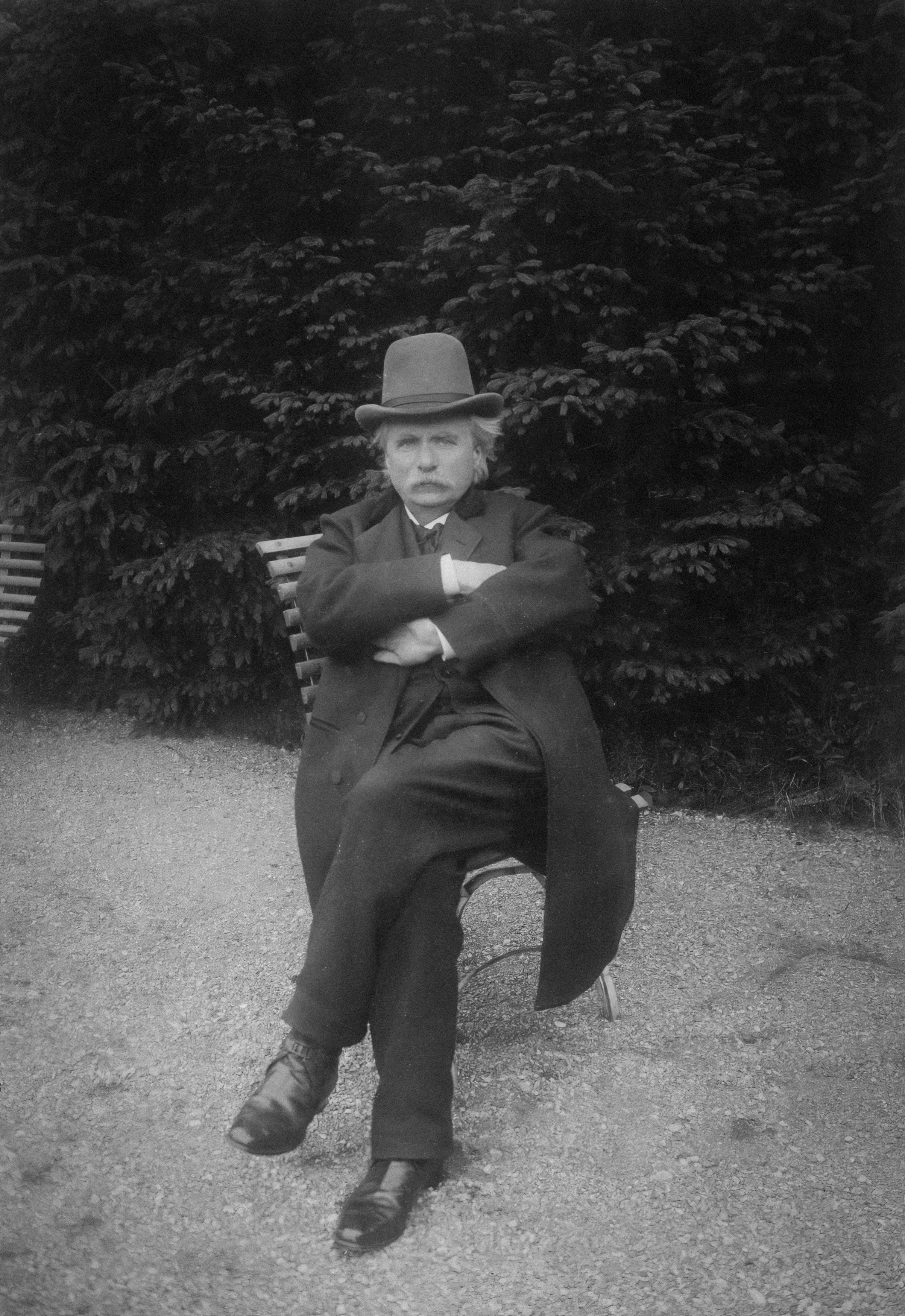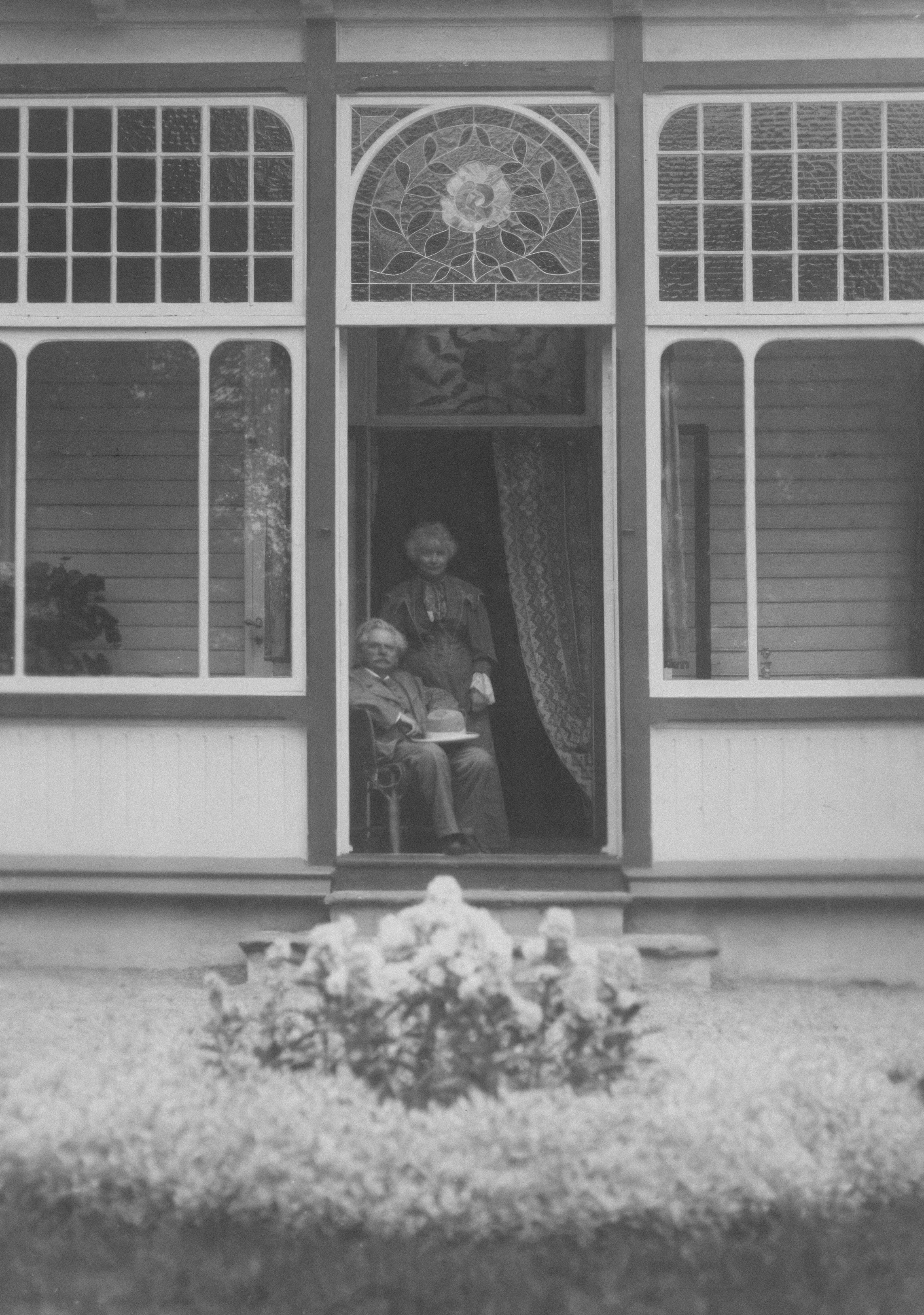Edvard Hagerup Grieg (1843–1907)
Edvard Hagerup Grieg was a Norwegian composer and pianist, widely regarded as one of the leading figures of the Romantic era. His incorporation of Norwegian folk music into his compositions not only brought international recognition to Norway's musical heritage but also played a pivotal role in shaping the country's national identity.

Early Life and Family Background
Born on June 15, 1843, in Bergen, Norway, Edvard Grieg was the son of Alexander Grieg, a merchant and the British consul in Bergen, and Gesine Judithe Hagerup, a music teacher. The Grieg family traced its roots to Scotland; the original surname "Greig" was associated with the Scottish Clan Gregor. After the Battle of Culloden in 1746, Grieg's great-grandfather, Alexander Greig, emigrated and eventually settled in Bergen around 1770.
Grieg's mother introduced him to the piano at the age of six, laying the foundation for his musical journey. She recognized his exceptional talent and provided him with his first musical education. The young Grieg showed remarkable aptitude for music, and his family's cultural connections would prove instrumental in his development.
Education and Early Career
In 1858, the renowned Norwegian violinist Ole Bull, a family friend, recognized Grieg's talent and recommended that he pursue formal studies at the Leipzig Conservatory. This recommendation would prove crucial in shaping Grieg's musical education and career path.
During his time at the Leipzig Conservatory, Grieg was influenced by the works of composers such as Felix Mendelssohn and Robert Schumann. The conservatory provided him with a solid foundation in classical music theory and technique, though he would later develop his own distinctive style that incorporated Norwegian folk elements.
Grieg made his debut as a concert pianist in Karlshamn, Sweden, in 1861 and completed his studies in 1862. His early performances demonstrated both his technical skill and his growing interest in creating music that reflected his Norwegian heritage.
Copenhagen Years and Musical Development
In 1863, Grieg moved to Copenhagen, Denmark, where he immersed himself in the Scandinavian music scene. This period was crucial for his artistic development, as he formed significant relationships with Danish composers J.P.E. Hartmann and Niels Gade. Most notably, he met fellow Norwegian composer Rikard Nordraak, who inspired Grieg's interest in Norwegian folk music and helped him develop a distinctly Norwegian musical voice.
Following Nordraak's untimely death in 1866, Grieg composed a funeral march in his honor, demonstrating the deep personal and artistic connection between the two composers. This period also marked Grieg's growing commitment to creating music that would establish Norway's place in the European musical tradition.
Marriage and Personal Life
In 1867, Grieg married his cousin, Nina Hagerup, a lyric soprano who became a prominent interpreter of his songs. Their marriage was both a personal and professional partnership, with Nina becoming one of the most important interpreters of Grieg's vocal works. The couple had a daughter, Alexandra, in 1868, who tragically died from meningitis in 1869. This devastating loss deeply affected both parents and influenced Grieg's emotional and musical development.
Major Compositions and Achievements
Piano Concerto in A minor
That same year as his daughter's death, Grieg composed his renowned Piano Concerto in A minor during a stay in Denmark. The concerto premiered in Copenhagen in 1869, with pianist Edmund Neupert performing and Grieg unable to attend due to commitments in Christiania (now Oslo). This work remains one of Grieg's most popular and frequently performed compositions, showcasing his mastery of both classical form and Norwegian musical elements.
Peer Gynt and Ibsen Collaboration
Grieg's collaboration with playwright Henrik Ibsen led to the creation of the incidental music for "Peer Gynt" in 1875, which includes the famous pieces "In the Hall of the Mountain King" and "Morning Mood." Despite his initial reservations about the music's overt nationalism, the suite became one of his most celebrated works and helped establish Grieg's international reputation.

The Peer Gynt suites, extracted from the incidental music, became immensely popular and are among the most frequently performed orchestral works in the classical repertoire. The music perfectly captures the dramatic and folkloric elements of Ibsen's play while maintaining Grieg's distinctive musical voice.
Lyric Pieces
Grieg's "Lyric Pieces," a collection of 66 short piano works composed between 1867 and 1901, showcase his ability to blend classical forms with folk influences. These intimate works demonstrate Grieg's mastery of the piano and his ability to create evocative musical landscapes that reflect Norwegian nature and culture.
Other Notable Works
Other significant compositions include the "Holberg Suite," originally written for piano in 1884 and later arranged for string orchestra, and his three violin sonatas. The Holberg Suite, written to commemorate the 200th anniversary of the birth of Danish-Norwegian playwright Ludvig Holberg, demonstrates Grieg's ability to work within classical forms while maintaining his distinctive style.

Troldhaugen and Later Years
In 1885, Grieg built his home, "Troldhaugen," near Bergen, which later became a museum dedicated to his legacy. This beautiful location provided Grieg with the peaceful environment he needed for composition and reflection. The house, with its stunning views of the Norwegian landscape, became a symbol of Grieg's deep connection to his homeland.
Throughout his life, Grieg toured extensively across Europe, promoting Norwegian music and culture. His performances and compositions helped establish Norway as a significant contributor to European classical music. He received honorary doctorates from the University of Cambridge in 1894 and the University of Oxford in 1906, recognizing his contributions to music and culture.
Musical Style and Innovation
Grieg's compositions are characterized by their lyrical melodies and incorporation of Norwegian folk elements. He was a master of creating atmospheric and evocative music that captured the essence of Norwegian landscape and culture. His use of modal scales, characteristic of Norwegian folk music, and his innovative harmonic language helped establish a distinctly Norwegian musical identity.
His works often feature:
- Modal harmonies derived from Norwegian folk music
- Lyrical, song-like melodies
- Evocative depictions of Norwegian nature
- Sophisticated use of orchestration
- Integration of folk dance rhythms and forms
Health and Final Years
Grieg's health was frail throughout his life, suffering from respiratory issues and a deformed thoracic spine. Despite these challenges, he remained active in his musical pursuits and continued to compose and perform until his final years. His determination and passion for music allowed him to overcome physical limitations and create some of the most beloved works in the classical repertoire.
Death and Legacy
Grieg passed away on September 4, 1907, in Bergen due to heart failure. His funeral was attended by thousands, reflecting his status as a national hero and cultural icon. His ashes were interred in a mountain crypt near his home at Troldhaugen, a fitting final resting place that overlooks the Norwegian landscape he so loved and celebrated in his music.
Commemoration and Influence
Grieg's contributions to music and Norwegian culture have been commemorated through various institutions bearing his name, including the Grieg Hall in Bergen and the Grieg Academy. His music continues to be performed worldwide and remains an essential part of the classical repertoire.
Grieg's enduring legacy continues to inspire musicians and audiences worldwide, reflecting the rich cultural heritage of Norway through his compositions. His work helped establish Norway as a significant contributor to European classical music and created a lasting musical tradition that continues to influence composers today.
Selected Works
- Piano Concerto in A minor, Op. 16 (1868): One of Grieg's most popular works
- Peer Gynt Suite No. 1, Op. 46 (1875): Includes "Morning Mood" and "In the Hall of the Mountain King"
- Peer Gynt Suite No. 2, Op. 55 (1875): Additional movements from the Peer Gynt incidental music
- Lyric Pieces (1867-1901): Collection of 66 short piano works
- Holberg Suite, Op. 40 (1884): Originally for piano, later arranged for string orchestra
- Violin Sonatas (1865-1887): Three sonatas blending classical forms with Norwegian folk melodies
- Songs and Vocal Works: Numerous art songs and choral works
- Chamber Music: String quartets and other ensemble works
Grieg's music represents a perfect synthesis of Norwegian folk tradition and European classical forms, creating a unique and enduring musical legacy that continues to captivate audiences around the world.

